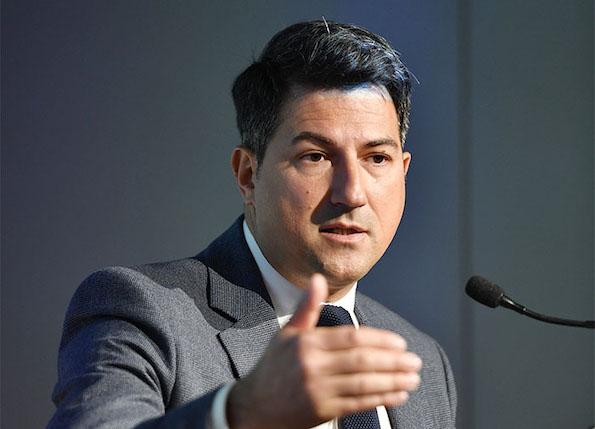
Frederic Lemos, head of Airbus Helicopters, spoke at a press conference on the eve of EBACE 2024.
GENEVA—Airbus Corporate Helicopters has “strengthened its position” in a market that is smaller but becoming less volatile and more predictable, Frederic Lemos, the division’s head, told a press conference here on the eve of the European Business Aviation Conference & Exhibition (EBACE).
In 2023, ACH booked 74 sales, representing 42% of the total orders placed across all corporate helicopter manufacturers in the year. This was lower than both 2021 and 2022, when the company sold 103 and 114 aircraft respectively; but well ahead of 2019, the last year before the COVID-19 pandemic hit and therefore the last year that Lemos suggests represents a comparable benchmark.
The value of those bookings was €575 million ($624 million), some 69% of the total spend. Lemos says the disparity is explained by the fact that single-engine rotorcraft are “important in terms of volume, but low in terms of value.” The company’s best-selling model, for the fifth year in a row, was the twin-engine ACH145, which booked 22 sales; 18 of the type were delivered during 2023.
There were nine orders for the ACH160 in 2023, and the first aircraft were delivered following the protracted completion of its certification program. One of those is due to be handed over to its customer at EBACE on Tuesday, May 28, shortly before Leonardo unveils its AW09. The former Marenco/Kopter SH09 will be a new competitor to the single-engine ACH125 and -130. Together, ACH sold 35 of those aircraft in 2023.
ACH is forecasting a global corporate helicopter market of around 200 aircraft worth a total of €1 billion per year over the next five years. The European market will represent around a quarter of that.
Lemos also highlighted Airbus’ work on its RACER (Rapid And Cost-Effective Rotorcraft) demonstrator, which made its first flight April 25. The aircraft combines a main rotor with two pusher propellers mounted on box wings. Airbus is targeting a cruise speed of 220 kt. with lower fuel burn and a corresponding reduction in carbon emissions when compared with conventional rotorcraft.
“The distinctive architecture of the RACER aims also at reducing its sound signature,” Lemos says. Noise level is an important consideration as Airbus uses the program to explore platform configurations to enable high-speed intercity connections.
